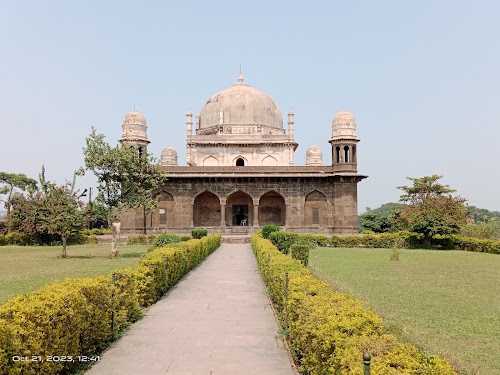
Black Tajmahal
Burhanpur, India
- Enjoy scenic views of the surrounding landscape.
- Explore the unfinished black stone structure.
- Learn about Mughal architectural experiments.
- Photography of the historical site.
Known for:
Description:
The 'Black Taj Mahal' in Burhanpur is a misnomer, often referring to the unfinished black stone structure believed to be Shah Jahan's initial plan for his own mausoleum, mirroring the white Taj Mahal. However, it's more accurately described as the remnants of a black-plastered tomb, possibly intended for Shah Shuja, Shah Jahan's brother. The site offers a glimpse into Mughal architectural ambitions and the materials they experimented with. While not a grand, completed monument, it holds historical significance for those interested in the Mughal era and the stories behind architectural endeavors. The site provides a peaceful atmosphere away from the crowds, making it a unique experience. The views of the surrounding landscape also offer scenic opportunities, especially during sunrise and sunset.
History:
Burhanpur held significant importance during the Mughal era, serving as the capital for a period. Shah Jahan spent considerable time in Burhanpur, and it's believed he initially planned to construct the Taj Mahal there before logistical challenges, particularly water availability and suitable marble, led him to shift the location to Agra. The 'Black Taj Mahal' is thought to be connected to this initial planning or intended for another royal member. Some historians suggest it was meant for Shah Shuja. The structure's unfinished state and the use of black plaster rather than black marble point to a different purpose or a project abandoned before completion. The site offers a glimpse into the Mughal's architectural processes and the changes in plans that shaped the iconic Taj Mahal we know today. The site is now managed and preserved to offer the visitors a look into the past.